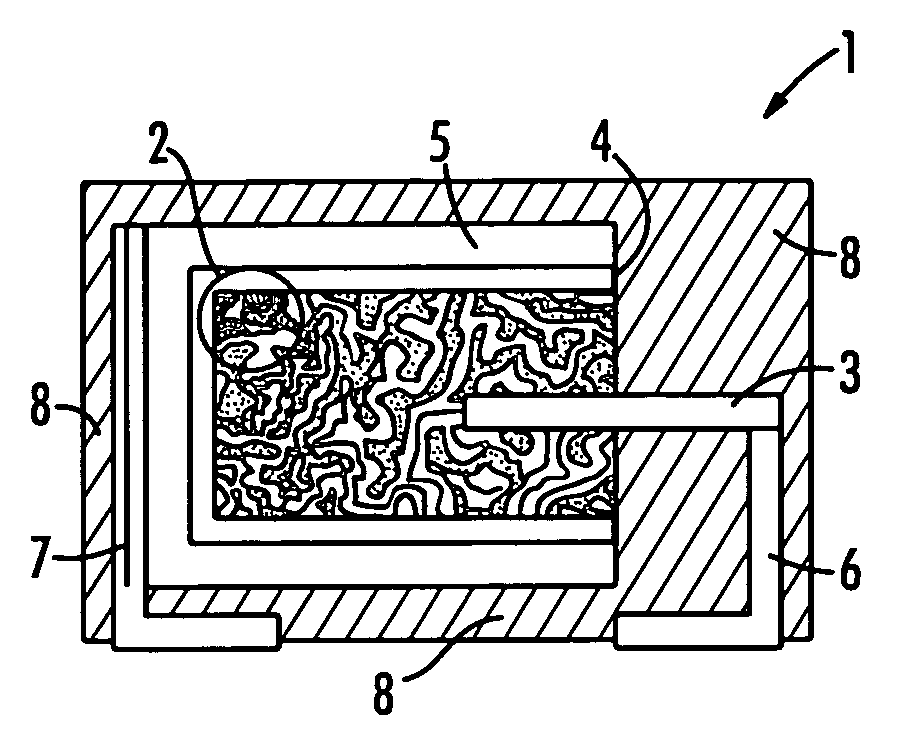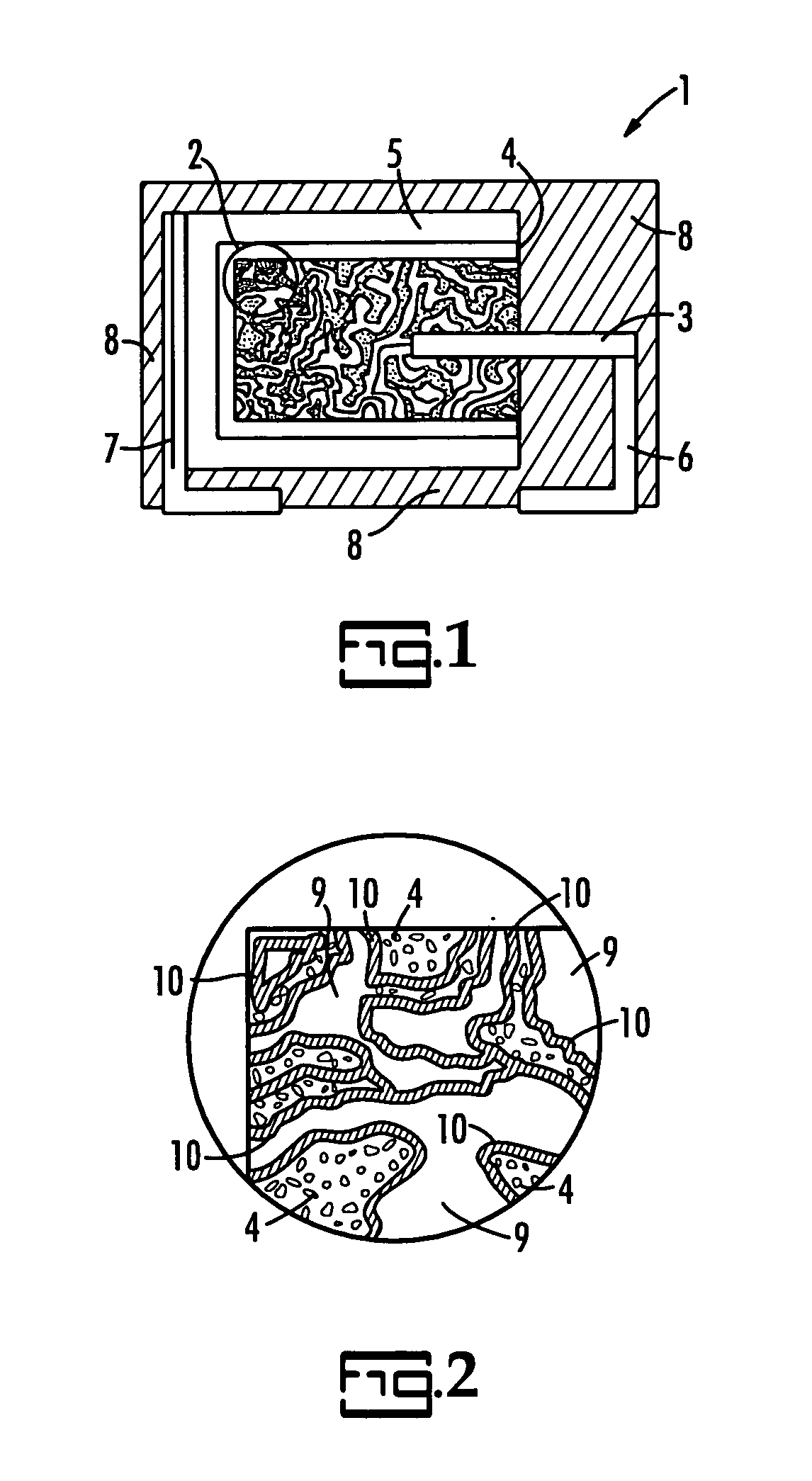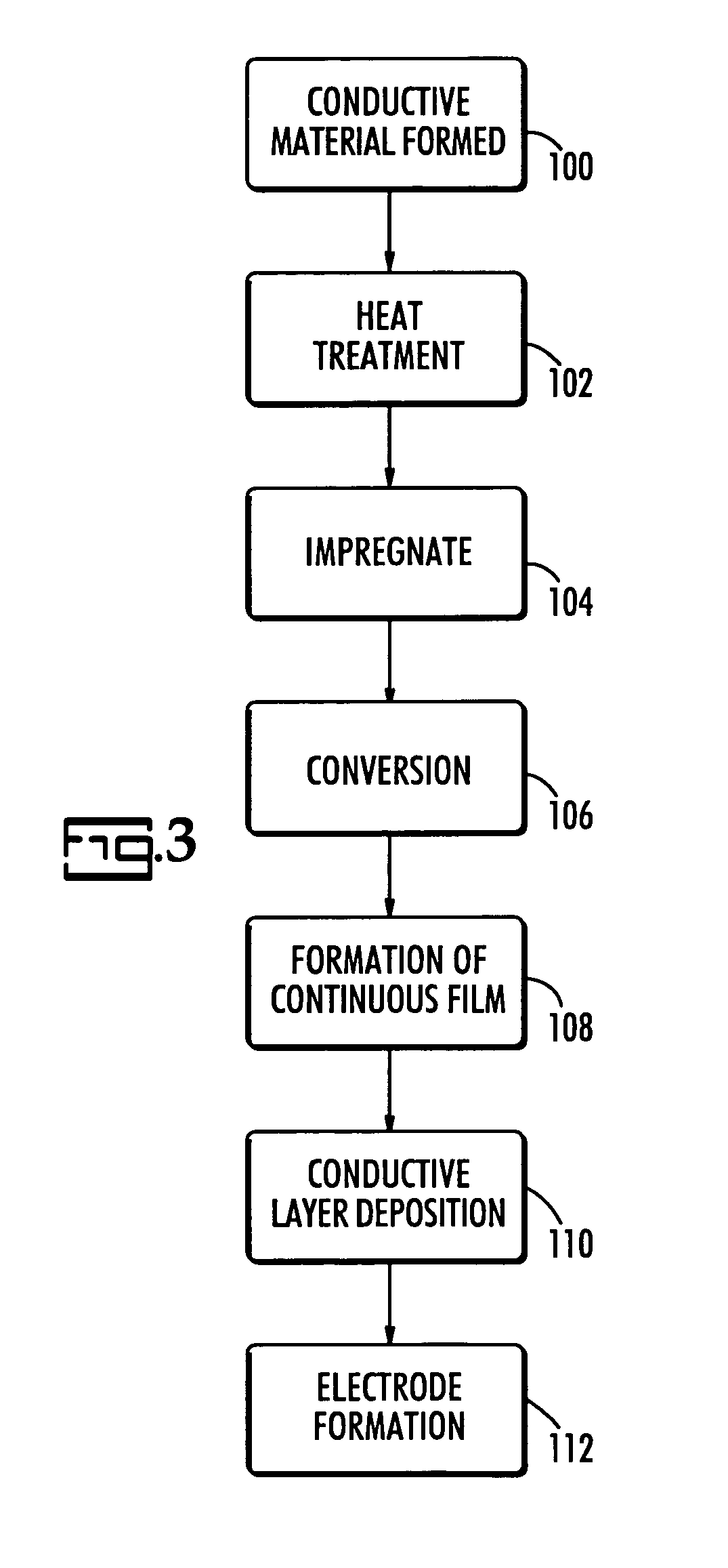Capacitor device
a capacitive couple and ceramic technology, applied in the field of ceramic capacitive couple improvement, can solve the problems of increasing the effort required to achieve these advances, reducing the capacitive density of multilayer ceramic capacitors or valve metal capacitors, and reducing the capacitive density. , to achieve the effect of reducing electrical shorts and leakage current, and increasing capacitan
- Summary
- Abstract
- Description
- Claims
- Application Information
AI Technical Summary
Benefits of technology
Problems solved by technology
Method used
Image
Examples
Embodiment Construction
[0018]The invention will be described with reference to the figures forming an integral part of the instant application.
[0019]A capacitor of the present invention is illustrated in cross-sectional view in FIG. 1. In FIG. 1, the capacitor, generally represented at 1, comprises a porous anode, 2, with dielectric in the pores of the anode which are not visible in this view. An anode lead wire, 3, extends from the anode and is in electrical contact with the anode. The anode lead wire is typically pressed into the anode or welded to the anode. A cathode layer, 4, extends from the interior of the anode to the exterior as will be more readily understood from the description infra. The anode, dielectric and cathode form a capacitive couple which can be incorporated into a device such as a capacitor. An adhesive layer, 5, allows the cathode to be electrically connected to a cathode lead, 7. The adhesive layer may include multiple layers to allow adequate adhesion and conductivity from the ca...
PUM
| Property | Measurement | Unit |
|---|---|---|
| porosity | aaaaa | aaaaa |
| thickness | aaaaa | aaaaa |
| thickness | aaaaa | aaaaa |
Abstract
Description
Claims
Application Information
 Login to View More
Login to View More - R&D
- Intellectual Property
- Life Sciences
- Materials
- Tech Scout
- Unparalleled Data Quality
- Higher Quality Content
- 60% Fewer Hallucinations
Browse by: Latest US Patents, China's latest patents, Technical Efficacy Thesaurus, Application Domain, Technology Topic, Popular Technical Reports.
© 2025 PatSnap. All rights reserved.Legal|Privacy policy|Modern Slavery Act Transparency Statement|Sitemap|About US| Contact US: help@patsnap.com



